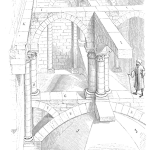
WHAT IS THE DIFFERENCE BETWEEN A CRITICAL SPARE AND A STRATEGIC SPARE, AS WE NORMALLY COMBINE BOTH AS ONE. IS THIS RIGHT OR NOT?
—
We are facing difficulty in developing a definition of Critical Spare Part Inventory. No one is able to define it in its true essence. The situation is further confused with the difference to strategic spare parts. Any guideline or standard where we can find it ?
In the past, every Plant Manager had their own definition of Critical Inventory which changed with time. In optimization of Inventory, the first step is to establish a definition of Inventory considering all factors like production loss, redundancy, safety hazard, failure frequency, and of course, the lead time? Still I am stuck in this phase. I cannot progress, and don’t know what to do 1st, 2nd, and so forth to proceed further in this journey?
Dear Ahmed,
A critical spare part is a component or assembly kept in inventory based on the justification that having it greatly reduces operating consequences and risk. Their purpose is to maximize plant and equipment availability. The decision to make a component or assembly a critical spare is arrived at by doing a criticality analysis for the item.
Strategic spare parts are those components and assemblies kept in inventory based on the justification that having them greatly reduces downtime when failure happens. They could be critical parts and also noncritical parts. Their purpose is to maximize maintainability and supportability.
An example of keeping a strategic spare part is when the time taken to procure a part is lengthy, or the part is difficult to source when needed. Another example is when assets get older and are superseded by newer models and newer technologies, the parts for the old equipment become fewer and eventually are no longer available. An everyday example of a strategic spare are the extra toilet paper rolls stored at arms reach from the toilet bowl. Running out of toilet paper is not a critical life or death event. But having no toilet paper is hugely inconvenient, so we carry spare toilet paper at-hand because it is greatly beneficial to do so. Those extra toilet paper rolls or boxes stored in the water closet are not critical spares, but they are strategic spares.
In regards your organisation’s spare parts inventory management. It seems to me, from what I understand of the situation, that your organisation has adopted inventory benchmarking targets and is making changes based only on reaching those targets without understanding the long term business and operating risks of those changes. As you mentioned, spare parts are used to reduce/eliminate operating and business risks. If you achieve inventory benchmark targets but replacement parts are not available in time to stop a failure, then the benchmark values are the wrong ones for your business. Before you adopt benchmark KPI’s it is necessary to assess the risk effects associated with a spare part. Your operation might be putting itself at greater risk by forcing inventory levels to meet benchmarks.
Which spares you carry in an operation should be based on the risk to the operation of not having those spares. It makes no sense to use an inventory measure in Pakistan that is applicable to organisations operating close to the manufacturer of an asset. You are right in thinking you need to factor for a company scenario where the lead time is higher due to many external reasons, like your procurement process, supplier location – normally not local in Pakistan, etc. Your aim with spares is to have them available in time to swap out the degrading part before it fails and stops the operation. If delivery is much faster than the rate of degradation, then you can order the spare part and it is sure to arrive before the failure. But if delivery takes longer than the time between identifying the problem and getting the replacement, then you would carry those parts as spares.
The one proviso on carrying spares in your store is you do not want to carry a spare part that will not be used until many years in the future. It can take lots of years for parts to degrade and if you had a replacement in store for all the years during which it is never going to be needed you would be unnecessarily tying up your capital. So part of your decision making on which spares to keep in store is to identify when parts will actually be required due to aging and usage. The decision to carry such spares is again based on the risk to your operation of parts are not available when needed. It can be a good risk management decision to buy spares at the time an asset is brought and to keep the spares for years even though you know they won’t fail for a long time. These difficult choices need to be assessed and considered by the managers in your company and then go forward with the plan they agree on.
I hope these thoughts and ideas provide you with some guidance to resolving your question on the difference between a critical spare part and a strategic spare for your inventory management endeavors.
All the best to you,
Mike Sondalini
P.S. If you have questions on life cycle asset management, equipment maintenance strategy, defect elimination and failure prevention, or plant maintenance and reliability, please feel free to contact me by email.
Very good